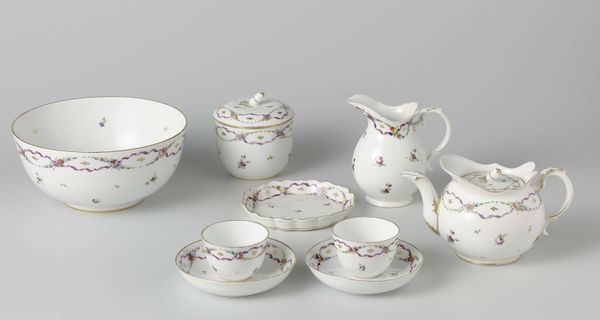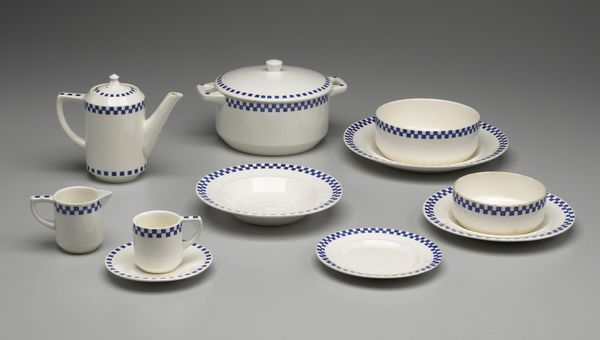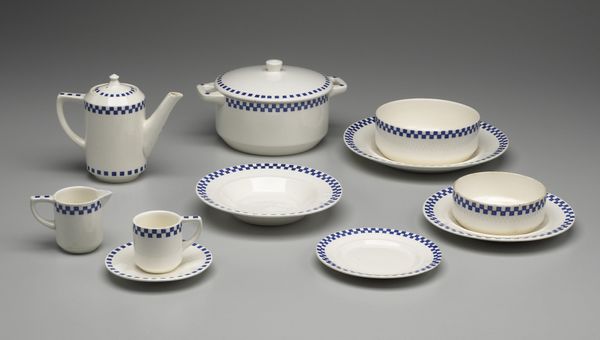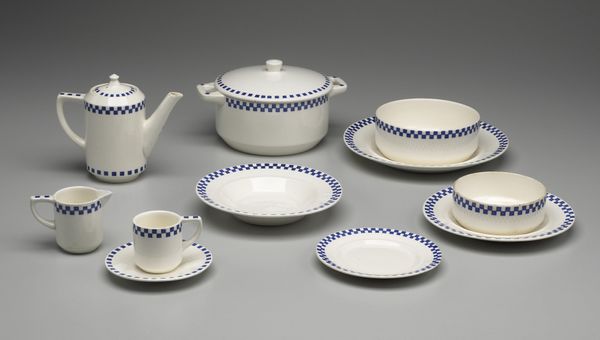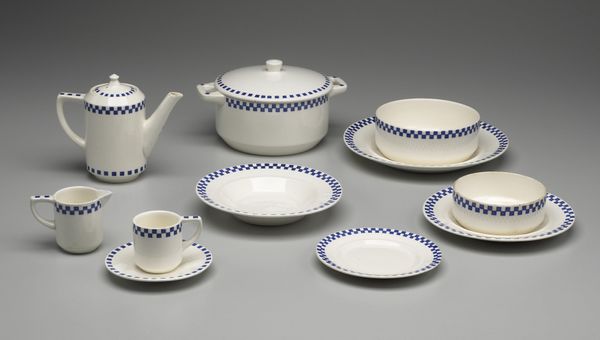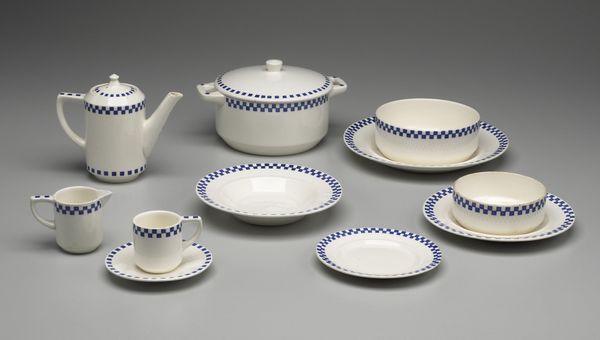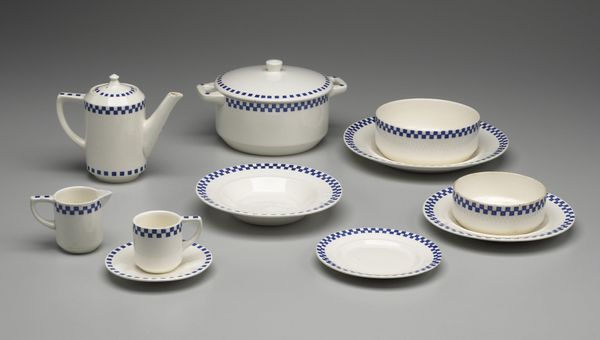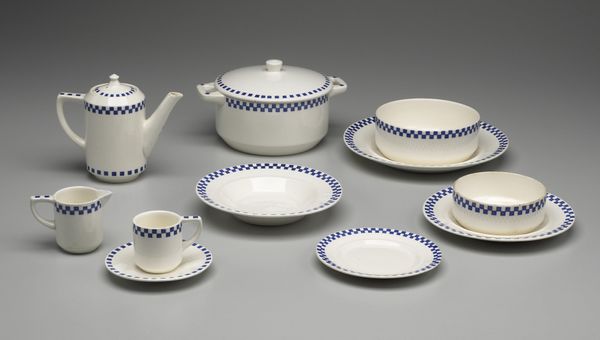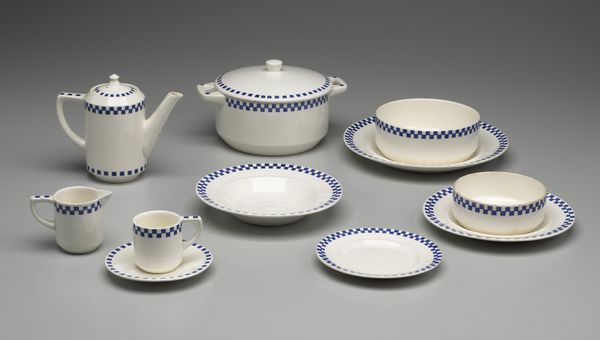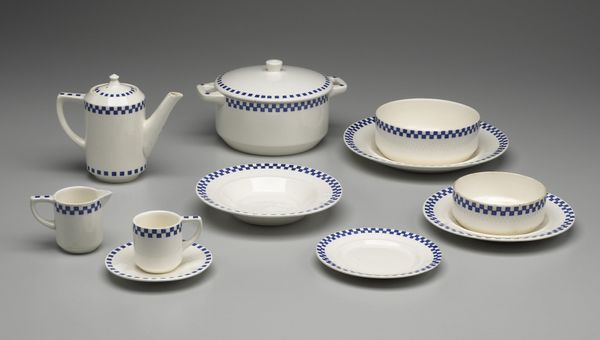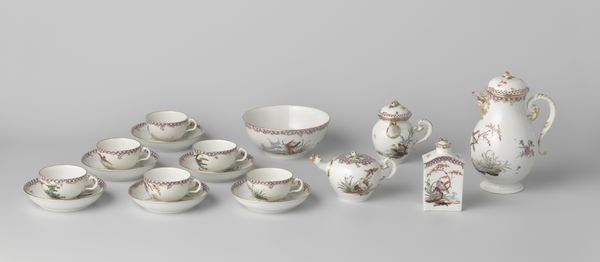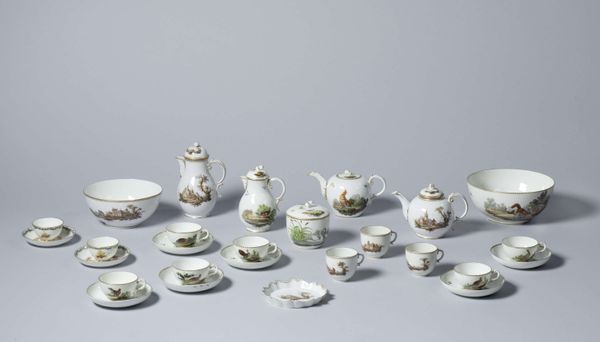
Theeservies bestaande uit een blad, theepot, melkkan, suikerpot, spoelkom en elf koppen en schotels, beschilderd met korenbloemen c. 1784
0:00
0:00
loosdrecht
Rijksmuseum
Copyright: Rijks Museum: Open Domain
Here is a porcelain tea service, made by Loosdrecht. The set includes a tray, teapot, milk jug, sugar pot, rinsing bowl, eleven cups and saucers, all adorned with cornflowers. Think about tea in the eighteenth-century: it was more than just a drink. It was a ritual, a social performance, particularly among the elite. Tea drinking became associated with gentility and refinement; it spoke of wealth, trade, and global connections. This tea service, decorated with delicate cornflowers, offers a glimpse into the material culture of its time. Porcelain itself was a luxury. This set is a product of the colonial context that shaped European society; the desire for exotic goods and commodities fueled exploration, trade, and often, exploitation. The act of gathering around a table like this allowed for the performance of class and gender roles through carefully choreographed social rituals. While seemingly delicate and decorative, this tea service encapsulates a complex web of historical and social narratives. It reflects the emotional investments and power dynamics embedded in everyday objects and practices.
Comments
No comments
Be the first to comment and join the conversation on the ultimate creative platform.
